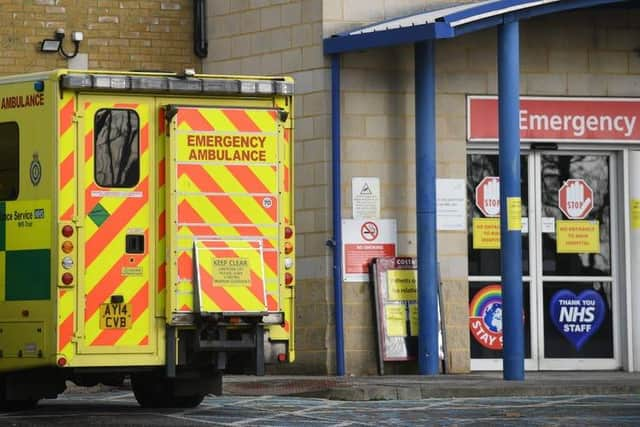A third of patients face ambulance handover delays at Doncaster and Bassetlaw Teaching Hospitals Trust
and live on Freeview channel 276
The Royal College for Emergency Medicine said the “dreadful” delays nationally were causing serious harm to patients and driving staff to leave the NHS.
NHS England data shows 796 people arrived at Doncaster and Bassetlaw Teaching Hospitals NHS Foundation Trust A&E by ambulance in the week to December 5.
Advertisement
Hide AdAdvertisement
Hide AdOf them, 280 (35 per cent) waited more than 30 minutes before being handed over to A&E staff, with 140 (18 per cent) waiting more than an hour.


The NHS has a target of 15 minutes for ambulance handovers, but only delays longer than half an hour are recorded.
The worst day for delays at Doncaster and Bassetlaw Teaching Hospitals Trust was November 30, when 46 per cent of patients faced long waits – the highest proportion recorded across the week.
Chief operating officer at Doncaster and Bassetlaw Teaching Hospitals, Rebecca Joyce said: “Unfortunately, as we see the usual winter pressures as well as the addition of increased rates of Covid-19 circulating amongst our communities, our services are currently extremely busy, despite the best efforts of colleagues.
Advertisement
Hide AdAdvertisement
Hide Ad"We are working closely with our partners across the region to ensure that patients get prompt access to urgent and emergency care and ambulances are turned around quickly so that they can assist others.”
Dr Ian Higginson, vice president at the RCEM, said the coronavirus pandemic made the “hidden” issue of hospital crowding visible across the country.
He said: “We used to say that emergency departments were thought of as having elastic walls – we would desperately try to get patients in to release ambulances back onto the road.
“That meant we would bring patients into emergency departments and would end up putting them in corridors, doubling up patients in cubicles, doing all sorts of things that were horrible for patients and led to crowding.”
Advertisement
Hide AdAdvertisement
Hide AdDr Higginson said Covid infection control measures meant patients could no longer be crammed into A&E departments during busy periods.
He added: “That meant we had to stop offloading ambulances – a problem hidden inside emergency departments became very visible.”
Lengthy ambulance handover times lead to delays in assessment and treatment and fewer ambulances being available to respond to emergencies, as well as having a knock-on effect on staff, Dr Higginson said.
He added: “There has been a chronic long-term failure in leadership and planning around the emergency care system and the NHS for many years.
“Repeated warnings about this problem have been ignored.”
Advertisement
Hide AdAdvertisement
Hide AdNHS England said last month, staff answered the highest number of 999 calls for any November on record – an average of around one every three seconds – and it was also the busiest November on record for A&E, with more than two million patients seen.
NHS national medical director, Professor Stephen Powis said staff were continuing to address backlogs in the face of “sustained pressure” on urgent and emergency care.
He added the NHS was heading into a “challenging winter” and the impact of the new Omicron variant of coronavirus was still unknown, but encouraged people to come forward for their booster jabs.
